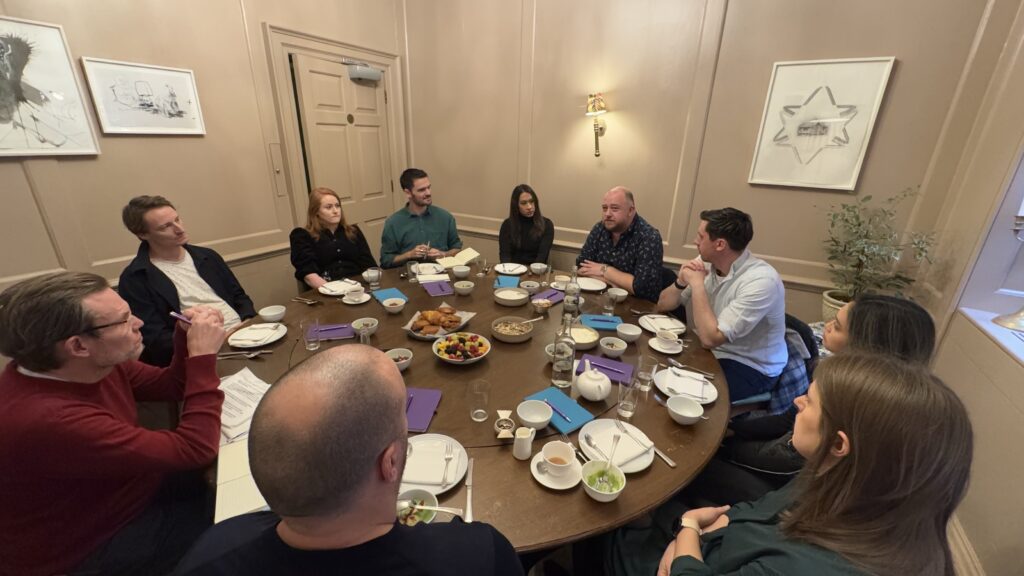Are we still headed for a ‘cookieless’ or even ‘ID-less’ future despite Google’s backtracking on third-party cookie deprecation? Is dropping cookies and other IDs still the right thing to do? If so, how much progress have brand advertisers and their agencies actually made to date?
NDA, in partnership with Nano Interactive, recently hosted a roundtable discussion of senior agency and brand marketers to answer these questions and discuss the challenges associated with ID-less targeting and measurement.
NDA’s editor Justin Pearse hosted the discussion and was joined by: Gen Braine, Local Digital and Performance Planning Lead, Domino’s; Freddy Clapson, Global Programmatic & Innovation Lead, team x Global; Charles Crotty, Managing Partner, Digitas Publicis; Patrick Hann, Ad Tech Manager at the IAB UK; Michael Murray, Head of Programmatic, OMD EMEA; Ruth Reynolds, Technology Director, Havas Media UK; plus Michaela Rairata, Client Growth Director and Niall Moody, CRO, both of Nano Interactive
Opening the conversation, Moody said: “Signal loss is changing things for marketers and, at Nano, our focus has always been to target and measure campaigns in a way that is ID-free. One of the reasons we decided to remove IDs from our platform was, when we looked at GDPR, we felt this was the best way forward to remove risk for advertisers. We want to drive scale in a way that we think we’re good at, but we work with other independent parties to measure that. We also collaborate closely with agencies themselves and their platforms.”
“I think the industry is moving towards a better future but making the transition is really, really challenging for a variety of reasons.”
Progress to date
On brands’ adoption of cookieless marketing, Reynolds said: “It’s half and half. Larger clients with bigger budgets can afford to test and invest in Customer Data Platforms, Data Clean Rooms, ID solutions and the like, but we also see lots of small-to-medium clients who don’t have those test budgets to play with, so they have to stick with the cookieless solutions that the existing buying platforms are rolling out.”
Reynolds named client-side legal approvals of new cookieless technologies as a common challenge to the use of alternative ‘cookieless’ targeting methods, particularly those that utilise first–party data.
Clapson added: “Even if you have the consumer consent and internal approval you need to use first-party data, what infrastructure do you then need to make data collaborations work? Every DSP has their own identity mapping solution which works in different ways and offers different levels of scale. The internal structure of our clients also has an impact: if they are a decentralised organisation, are all markets willing to invest in the centrally offered solution?”
Hann agreed that the complexity of the ad tech marketplace is making it difficult for brands to know the best way forward. “It’s very hard to be all over everything. If you’re not really aware of the technicalities and legal issues around the use of something like data clean rooms, for example, it’s going to be completely overwhelming.”
In terms of the response of agencies so far, Hann said: “It’s a real spectrum. Many of the bigger agencies have already kind of surpassed what we might have expected in terms of building full solutions that integrate so many data points and things like that. At the other end of the scale, there are smaller agencies working with smaller brands where the cookieless conversation has been peripheral to date but is about to become more of an immediate concern.”
Crotty spoke of how larger agencies had already spent a lot of time thinking about life beyond cookies. He said: “Every major account has had a cookieless future workstream and an attention workstream in recent years. The truth is that everything in digital marketing has become really in-depth and complicated. There’s now a bewildering volume of different ID solutions out there. The idea of making some sort of patchwork out of those seems like a huge task when marketers are already so stretched.”
Common challenges
Of course, not all of the challenges to a cookieless future are technical in nature.
Murray commented: “We’ve all worked with big brands where it takes a long time to get a greenlight on media plans, so when you’re talking about making a fundamental shift in how they’ve been targeting and scaling campaigns, it’s difficult. Everyone was used to using cookies.
“This is also a very technical area, so you’re often asking marketers to make decisions that they don’t necessarily feel fully equipped to make. The fact that Google kept kicking their deadline for deprecation back again and again didn’t help. No one felt as if they had all the information they needed.”
Offering a brand marketer’s perspective, Braine said: “As we move forward as an industry, we’ll definitely find new, different ways of measuring activity, instead of just focusing on cookies and first-party data. It will depend on the goals of the brand as to which model they use. From my perspective, I think the biggest challenge for marketers will be re-educating our senior leadership teams on new models of measurement. If your senior leadership has grown used to weekly reporting on CPAs and CPMs it could be a tricky transition to make.”
Rairata agreed from a Client Success lens, stating: “It’s all of our responsibility to ensure that the industry moves forward in the right direction and avoid that sense of inertia. So by working with clients to simplify processes, complex concepts and ensure we’re easy to do business with, will go a long way.
“Even if cookies aren’t going away completely, they might as well be – set to plateau at 13 per cent coverage across the web. And after Google’s U-turn on cookie wipeout, the big questions we were asking before still apply.
“Nano’s own evolution is also now part of a wider industry-wide trend, alongside tactics like attention and MMM, combining cutting-edge tech with long established techniques.
“For example, attention makes use of panels – alongside increasingly advanced page-based or engagement metrics. Context meanwhile, with the help of AI, is evolving into intent targeting – including everything from estimated search terms, time of day, device, to placement-level performance insights.”
Part Two coming soon.









